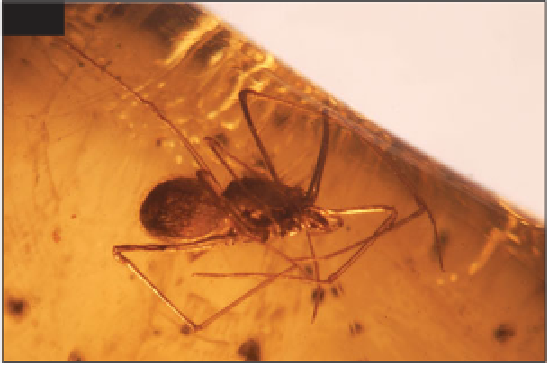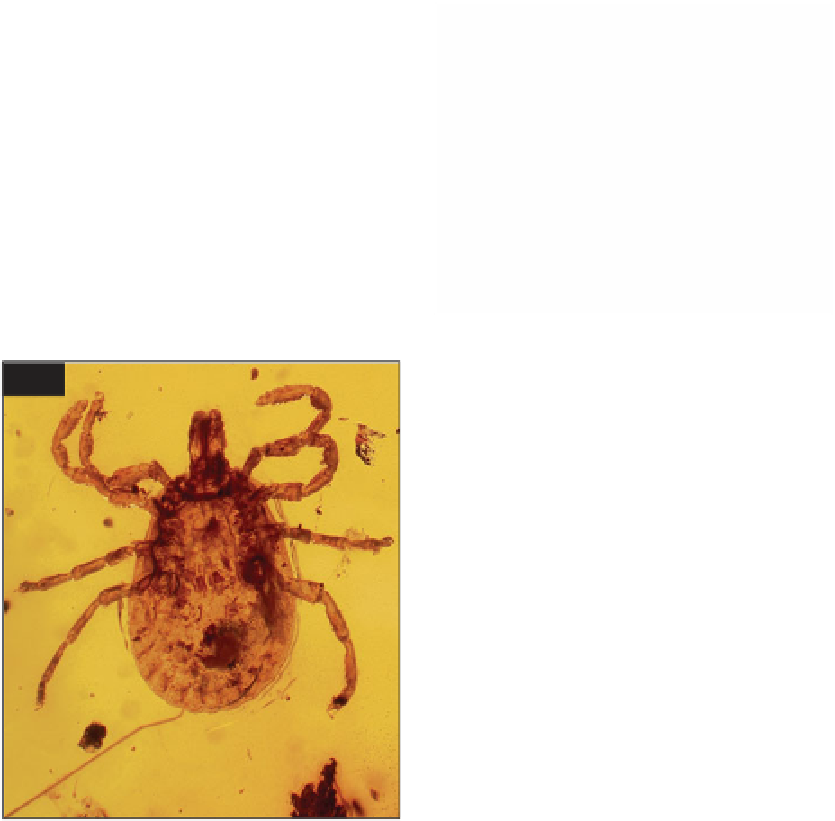Geoscience Reference
In-Depth Information
parasitic ticks (
278
) have been recorded.
Some of the parasitic forms are host-
specific, so it is possible to infer the
presence of the host from the fossil
evidence of the parasite. For example, a
soft tick,
Ornithodorus antiquus
,
suggested the presence of a rodent,
possibly a hutia.
More than 90% of all fossil spiders
(Araneae) known are from amber.
Representatives of 44 families have been
described from Dominican amber (
279
).
The most diverse family in the amber is the
Theridiidae (
280
). These spiders make
sheet and tangle webs with glue droplets,
often in crevices around trees. Next most
diverse are salticids (jumping spiders),
dictynids, and araneids (orb-weavers).
It is instructive to compare the living spider
fauna of Hispaniola with the fossil (Penney,
2005a). We find that in the living fauna,
araneids and salticids are most diverse,
followed closely by theridiids. There are
very few dictynids described from the living
278
278 An ixodid tick PC. Length about 1 mm
0.04 in.
279
279 Spitting spider
Scytodidae AMPP. Body
length about 3 mm 0.1 in.





Search WWH ::

Custom Search